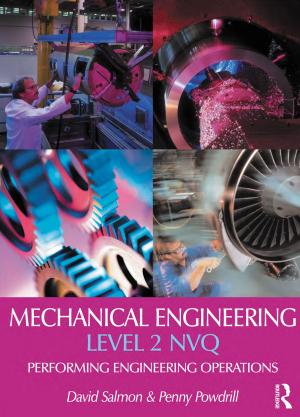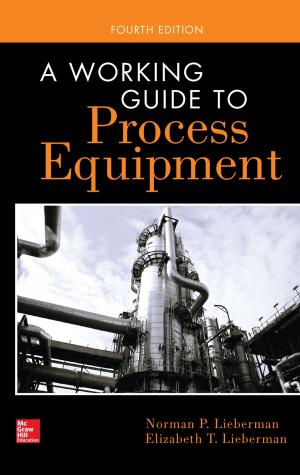Pumps and Hydraulic Rams - With Numerous Engravings and Diagrams
Original by Paul Hasluck
Nonfiction, Science & Nature, Technology, Engineering, Mechanical| Author: | Richard Jemmett | ISBN: | 1230000172893 |
| Publisher: | OneToRemember | Publication: | August 30, 2013 |
| Imprint: | Language: | English |
| Author: | Richard Jemmett |
| ISBN: | 1230000172893 |
| Publisher: | OneToRemember |
| Publication: | August 30, 2013 |
| Imprint: | |
| Language: | English |
This book is approximately 34,000 words and 167 pages long. It contains 171 diagrams. Written by Paul Hasluck this book was published in 1907. The book has been re-published from the original and contains the whole script, diagrams and formulas. The book has been reformatted to help reading on the kindle and is not just a scanned copy of the original
The formal title is Pumps and Hydraulic Rams with numerous engravings and diagrams. Chapters include:
Suction Pumps and Lift Pumps
Making Simple Suction Pumps
Pump Cup Leathers
Pump Valves
Ram or Plunger Pumps
Making Bucket and Plunger Pump
Construction of Plumber’s Force Pump
Wooden Pumps
Small Pumps for Special Purposes
Centrifugal Pumps
Air-lift, Mammoth, and Pulsometer Pumps
Hydraulic Rams
Taken from the beginning of the book....'Years ago, before the majority of towns was supplied with water from companies' mains, there was an enormous number of pumps in everyday use for domestic purposes, and most of these were of either the suction type (jack pumps) or of that type known as the lift, force, or engine. Both types of pumps have still an extensive use in country districts, and more commonly come into the hands of the fitter and repairer than any other kind. '
The hydraulic ram chapter is of particular interest. The chapter starts as follows..... 'Hydraulic rams are water-raising appliances in a class by themselves. The shock that is commonly noticed on quickly closing a fullway cock and sud-denly stopping the flow of water in long lengths of pipe is the power employed in the hydraulic ram.
The hydraulic ram was invented in 1772 by Whitehurst, and about the same time it was accidentally discovered by a Bristol plumber, who was engaged in a hospital in that city fixing long lengths of lead piping, which had a considerable head of water on them. To the extreme end of one of the pipes he was fixing, and at the lowest point, he had soldered an ordinary ground bib tap, with a plug that was very easily turned. When turning off the tap quickly, he found that the pipe had split and burst. After repairing it, he found the same thing occurring again every time he closed the tap suddenly. This caused him to consider, and he came to the conclusion that the evil was caused by the sudden closing of the tap arresting the flow, or momentum, of the water in the pipe plus the weight of water in the length of pipe, exerting a blow, generated by the excess of pressure and causing the pipe to burst. After trying many experiments in order to remedy this defect, the plumber soldered a small pipe behind the tap, carried it up the wall, and discharged it over the top of the cistern that supplied the tap. Every time the tap was used, he found that the water rushed back into the cistern with great force and noise. As this seemed very strange, he determined to test the matter, and he then continued the pipe up to a cistern on the roof of the house, which he found could be supplied with water from a lower cistern by simply turning the tap quickly on or off.'
The book contains 170 illustrations that are carefully described by the writer.
This book is approximately 34,000 words and 167 pages long. It contains 171 diagrams. Written by Paul Hasluck this book was published in 1907. The book has been re-published from the original and contains the whole script, diagrams and formulas. The book has been reformatted to help reading on the kindle and is not just a scanned copy of the original
The formal title is Pumps and Hydraulic Rams with numerous engravings and diagrams. Chapters include:
Suction Pumps and Lift Pumps
Making Simple Suction Pumps
Pump Cup Leathers
Pump Valves
Ram or Plunger Pumps
Making Bucket and Plunger Pump
Construction of Plumber’s Force Pump
Wooden Pumps
Small Pumps for Special Purposes
Centrifugal Pumps
Air-lift, Mammoth, and Pulsometer Pumps
Hydraulic Rams
Taken from the beginning of the book....'Years ago, before the majority of towns was supplied with water from companies' mains, there was an enormous number of pumps in everyday use for domestic purposes, and most of these were of either the suction type (jack pumps) or of that type known as the lift, force, or engine. Both types of pumps have still an extensive use in country districts, and more commonly come into the hands of the fitter and repairer than any other kind. '
The hydraulic ram chapter is of particular interest. The chapter starts as follows..... 'Hydraulic rams are water-raising appliances in a class by themselves. The shock that is commonly noticed on quickly closing a fullway cock and sud-denly stopping the flow of water in long lengths of pipe is the power employed in the hydraulic ram.
The hydraulic ram was invented in 1772 by Whitehurst, and about the same time it was accidentally discovered by a Bristol plumber, who was engaged in a hospital in that city fixing long lengths of lead piping, which had a considerable head of water on them. To the extreme end of one of the pipes he was fixing, and at the lowest point, he had soldered an ordinary ground bib tap, with a plug that was very easily turned. When turning off the tap quickly, he found that the pipe had split and burst. After repairing it, he found the same thing occurring again every time he closed the tap suddenly. This caused him to consider, and he came to the conclusion that the evil was caused by the sudden closing of the tap arresting the flow, or momentum, of the water in the pipe plus the weight of water in the length of pipe, exerting a blow, generated by the excess of pressure and causing the pipe to burst. After trying many experiments in order to remedy this defect, the plumber soldered a small pipe behind the tap, carried it up the wall, and discharged it over the top of the cistern that supplied the tap. Every time the tap was used, he found that the water rushed back into the cistern with great force and noise. As this seemed very strange, he determined to test the matter, and he then continued the pipe up to a cistern on the roof of the house, which he found could be supplied with water from a lower cistern by simply turning the tap quickly on or off.'
The book contains 170 illustrations that are carefully described by the writer.















